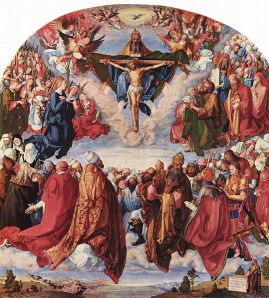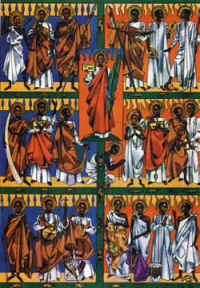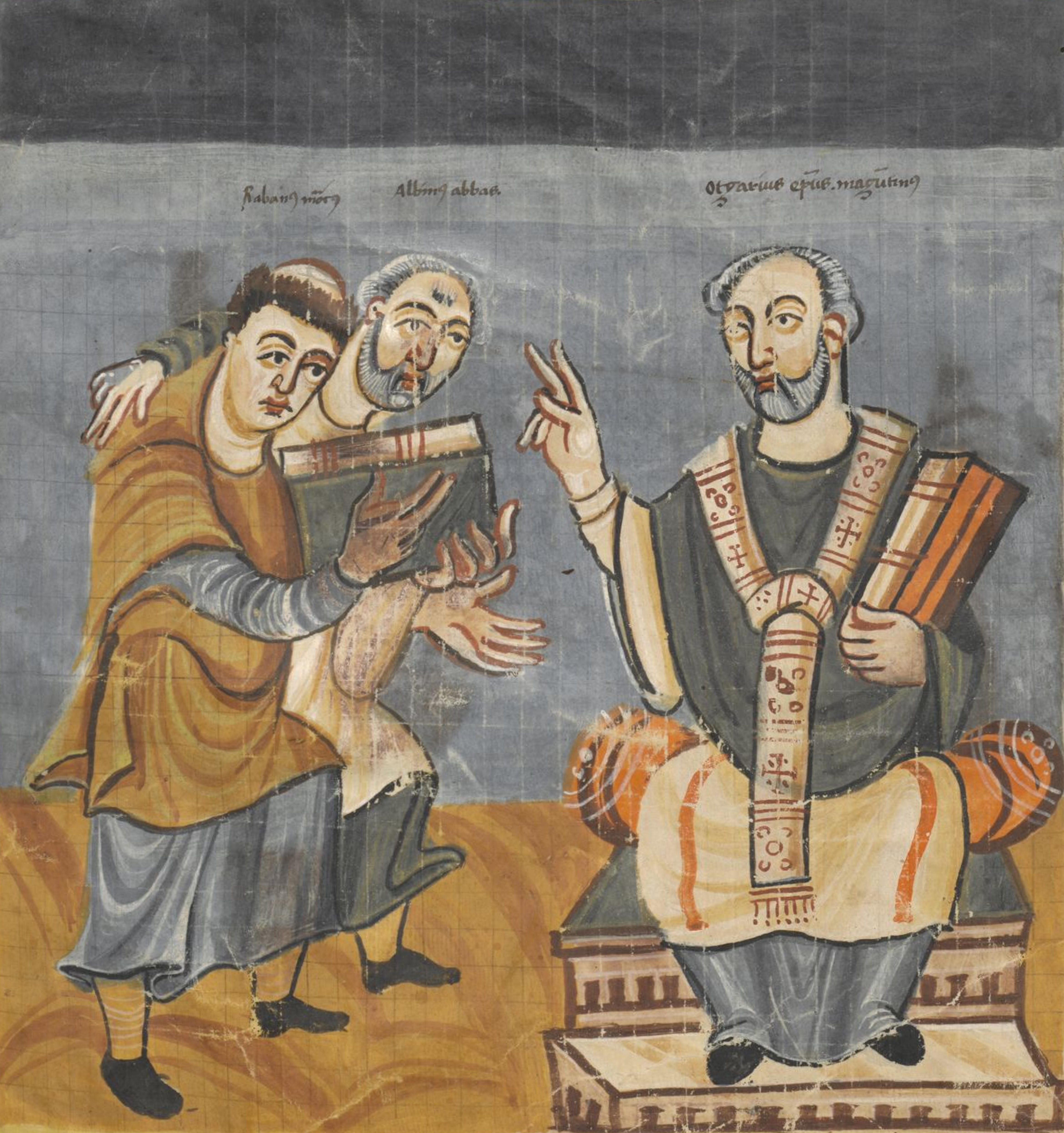The Pope’s visit to the UK later this year is turning the spotlight on
Cardinal John Henry Newman – Newman’s scheduled beatification is the ostensible primary reason for the visit. There are many aspects of Newman’s life and work that will be worth considering: his story as a leading Anglican convert to Rome will focus attention on the relations between the two churches, on the privileged position of the Anglicans as the “established” church here, and on the legal disadvantages of the Catholic church. There will also be interest in his work as a theologian, which has led some to see him as a “progressive” for his insistence on the primacy of conscience, while paradoxically others hail him as an arch traditionalist. I hope to discuss both of these later. For now though, I want to consider another aspect of his life, his well-known intensely passionate love for a younger priest, Ambrose St John.

This love has led me, like others, to include Newman in my collection of
“queer” saints and martyrs. At the Guardian,
Jack Valero clearly disagrees. In his discussion of Newman, he complains, “
It is symptomatic of modern values that we conclude Cardinal Newman’s intense love for a man meant he was a homosexual.” My response to this, is that it is even more symptomatic of the modern Church that we conclude that anybody identifying as “homosexual”, or as gay, is not celibate. This is an important issue for the place of gay men and lesbians in the Catholic church, and of the treatment we receive.
First, let us consider the bare facts of Newman and his love, which are generally agreed. His love for St John is beyond dispute. "He loved me with an intensity of love, which was unaccountable," Newman wrote after St John’s death. This love was reciprocated, to the extent that it was his explicit wish that he wanted to be buried alongside his lover in a shared grave. This wish was understood and respected by his colleagues of the Birmingham Oratory, and so it was done. However, there is no serious suggestion that the intense love between the two was given sexual expression. They were, after all, both priests. Yet from the same set of agreed facts, one side acclaims him as a “gay” saint, another as obviously not “homosexual”. To make sense of this contradiction, I now want to explore some of the nuances behind the bare facts.
A priest’s desire today to be buried in the same grave as another priest would certainly be extraordinary, possibly even scandalous but in earlier times it was uncommon, but less remarkable. Alan Bray in “
The Friend
” describes many English churches which have tombs holding male couples, some of them priests. What is significant here, is that this practice of burying couples in shared tombs was far more commonly practiced for married couples – and many of the male couples buried together that Bray described are known to have been “sworn brothers”, made so in a liturgical rite exactly comparable to the rite of “adelphopoesis” that John Boswell describes in “
Same-Sex Unions in Premodern Europe
”. Boswell and Bray disagree on the significance: Boswell presents evidence that these rites included many elements exactly comparable to the rites for opposite-sex marriage of the day. Bray argues that they should not be seen as a form of marriage, but merely as a sign of deep friendship – some of the men undergoing sworn brotherhood were also married to wives. Most of these predated Newman and St John by many centuries – by the nineteenth century the practice had all but died out, and there is no evidence that the men had ever formalized the relationship in any form of written contract or liturgical rite, Still, the symbolism of the shared grave remains powerful, given its historical context.
Now, consider Newman’s celibacy. Recall that he started life as an Anglican, for whom clerical celibacy was not a requirement. He quite specifically approved of marriage as a general rule, and believed that “country parsons” too should marry. Yet, even at the tender age of 16, he knew that he personally would not, believing that a single life was the “will of God” for him. If this deliberate celibacy in a priest should mean that he cannot be considered “homosexual”, does this mean that he is necessarily to be thought of as “heterosexual”? Surely not. Celibacy in itself is no indicator of sexual orientation. The common words simply are not of any help. Personally, I no longer think in terms of any category of “gay” saints: the modern word does not work outside of the modern period, and so I use the term “queer” instead, to denote anybody whose behaviour or choices stand clearly outside the standard, gendered role models for “heterosexual” men and women. On this basis, I have no hesitation in describing as “queer” a man who early on praised marriage in principle, but eschewed it for himself without any religious obligation to do so, and whose major emotional investment was a passionate (if sexless) relationship with a man, with whom he desired to share eternity.
Now, I return to the implications behind the opening statement in the Guardian: “It is symptomatic of modern values that we conclude Cardinal Newman’s intense love for a man meant he was a homosexual.” The argument here, that celibacy denies “homosexuality”, can be turned on its head: there is an assumption behind it that “homosexual” implies sexual activity. This is a dangerous assumption, which leads to some of the more shameful aspects of pastoral practice in the institutional church. Vatican theory is quite different: the significant modern documents draw a clear distinction between the homosexual person, the “inclination” (or orientation), and actions. It is made clear that the “inclination” is not sinful, and that homosexual persons are to be treated with compassion, dignity and respect. Only homosexual “actions” are considered to be sinful. Yet Vatican teaching argues against protecting the persons from discrimination in housing or employment, even though such discrimination is clearly targeted at people for who they are, not for what they may have done. In defending this position, they claim that the “person” can remain free of discrimination by the simple expedient of keeping his “inclination” secret. “DADT”, in other words, in the Church.
This week, the English courts ruled on the validity of this argument as it applies to gay asylum seekers, looking for refuge here from serious homophobic persecution, even the risk of death, in their home countries. The British Border Agency, fearing that a sympathetic ruling would open the flood-gates to unwanted hordes of opportunistic refugees, had argued that gay Iranians, Sudanese and the like could escape persecution by the simple expedient of remaining closeted. The court sensible disagreed, stating that this was an entirely unreasonable and unjust expectation. It is even more unreasonable and unjust on the part of a Church which reminds us (in “Homosexualitatis Problema”, para 18) of the Scripture injunction to “Speak the truth in love”, and “the truth shall set you free”.
The problem is that the Vatican promise of “dignity, compassion and respect” does not apply to persons who are “homosexual”, but only to those who hide their sexuality. Why? Because if their “condition” is known, they are assumed to be not celibate - even when they give assurances to the contrary, as was the case of the Canadian altar server. This is not just a problem for the Vatican – it applies equally to the Anglican Church, and was the unstated problem that derailed the proposed selection of Jeffrey John as Bishop of Southwark. John declares that he is celibate. However, he is known to be in a Civil Partnership. British law on these partnerships is clear that they are in many respects virtually identical to conventional marriage, but there are a handful of key differences. One of these is that unlike traditional marriage, there is no requirement of sexual consummation for the partnership to be legally valid. In terms of law, it is entirely possible for two men to be in a legal Civil Partnership, and celibate, just as John says he is. His opponents, however, simply refuse to believe this. To them, the simple fact that two homosexually identified men are living together is taken as “proof” that they are not celibate. In the commentary around John’s nomination, it was asked whether there was any “proof” (such as video footage) that their relationship was “chaste”. Why?
Now, let us return once more to Cardinal Newman. He never disclosed physical sexual activity, or its absence with St John, but in the absence of evidence, it is assumed that his close emotional relationship was suitable celibate. In the case of both the (Catholic) Canadian altar server, and the (Anglican) Jeffrey John, we have clear statements of both that their relationships with their partners are celibate, and so (presumably) exactly comparable to that of Newman and St John. Yet the popular assumption around these men is precisely the reverse of that applied to Newman. Whereas he is assumed to be celibate, they are assumed not to be. If modern standards had been applied to Newman, he should have been barred from the priesthood altogether, let alone raised to high office and a path to sainthood.
Books:
Boswell, John :
Same-Sex Unions in Premodern Europe
Alan Bray,
The Friend
























